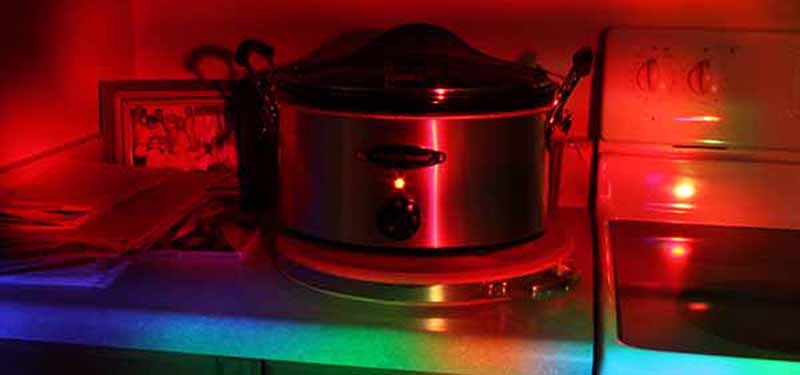For apparently inexplicable reasons, the price of thermal imaging cameras has been dropping precipitously over the last few years, but there are still cool things you can do with infrared temperature sensors.
A few years ago – and while he was still writing for us – [Jeremy] came across an absurdly clever thermal imaging camera. Instead of expensive silicon, this thermal camera uses a flashlight with an RGB LED, a cheap IR temperature sensor, and a camera set up to take long exposures. By shining this flashlight/IR sensor around a dark room, a camera with a wide-open shutter can record color-coded thermal images of just about anything.
Since then, an interesting product appeared on the market. It’s the Black & Decker TLD100 Thermal Leak Detector, and it’s basically an infrared thermometer and LED flashlight stuffed into one neat package. In other words, it’s the exact same thing we saw two years ago. We’d like to thank at least one Black & Decker engineer for their readership.
[Jeremy] took this cheap, off-the-shelf leak detector and did what anyone would do after realizing where the idea behind it came from. He set up his camera, turned off the lights, and opened the shutter of his camera. The results, like the original post, don’t offer the same thermal resolution as a real thermal camera. That doesn’t mean it’s still not a great idea, though.
















This is great. Amazon has this for sell with very high reviews.
http://www.amazon.com/Black-Decker-TLD100-Thermal-Detector/dp/B0044R87BE/ref=sr_1_1?ie=UTF8&qid=1422442184&sr=8-1&keywords=TLD100
Well, the Black and Decker TLD100 isn’t exactly a new thing (Dec. 2008):
http://www.geek.com/gadgets/thermal-leak-detector-finds-those-cold-spots-in-your-house-this-winter-638812/
and it was also mentioned in the old Hackaday post:
http://hackaday.com/2013/01/03/an-absurdly-clever-thermal-imaging-camera/
But the long exposure photo is neat.
Jeremy get your liar… lawyer on the horn now, you have a million bucks sitting there waiting for you.
“Since then, an interesting product appeared on the market. It’s the Black & Decker TLD100 Thermal Leak Detector, and it’s basically an infrared thermometer and LED flashlight stuffed into one neat package”
It’s really interesting to see this – a manufacturer copying an idea from a hobbyist, but good ideas are good ideas and we probably cannot afford to patent stuff and protect it.
A while ago i did this: http://www.electrobob.com/blue-panda/ and what do you know, half a year later in the new arrival email from some Chinese wholesale store is exactly that. Now they are everywhere.
I don’t understand why hackaday thinks Black and Decker ripped off this project when their version predates it by 5 years..
Very cool, so you take a reference reading (green), select a delta temperature 1,5,10 degrees of a change and it. This changes the LED to blue if the temperature is below by that delta and to red if it is above by that delta. This is basically a
Non-Contact LCD IR Laser Infrared Digital Temperature Thermometer Gun with a new RGB LED and a CPU added.
A much cooler hack would be to vary the RGB LED colour from green to through cyan to blue when going through the cooling gradiant. And then from green through yellow to red as the temperature rises.
The long exposure time photos would be much more interesting. But I’m guessing that will be the next version of the gun.
What about this…
You make an IR thermometer output it’s temperature as the colour of a tri-colour LED and then sweep it over the scene with a long exposure. No post processing to create the false colour heat map.
that is what the project in the reference does: http://hackaday.com/2013/01/03/an-absurdly-clever-thermal-imaging-camera/
actually, the patent application is awaiting approval. It seems they do have the earliest prior art…
US20120275487
https://www.google.com/patents/US20120275487
here are my notes on the DIY prior art record:
http://publiclab.org/notes/mathew/01-29-2015/dealing-with-patents-black-decker-and-the-thermal-flashlight
“inexplicable reasons” is that the tech is cheap now and yet they have continued to artificially keep the prices high. Some cheap cameras contain the same hardware as more expensive but different software with features disabled.